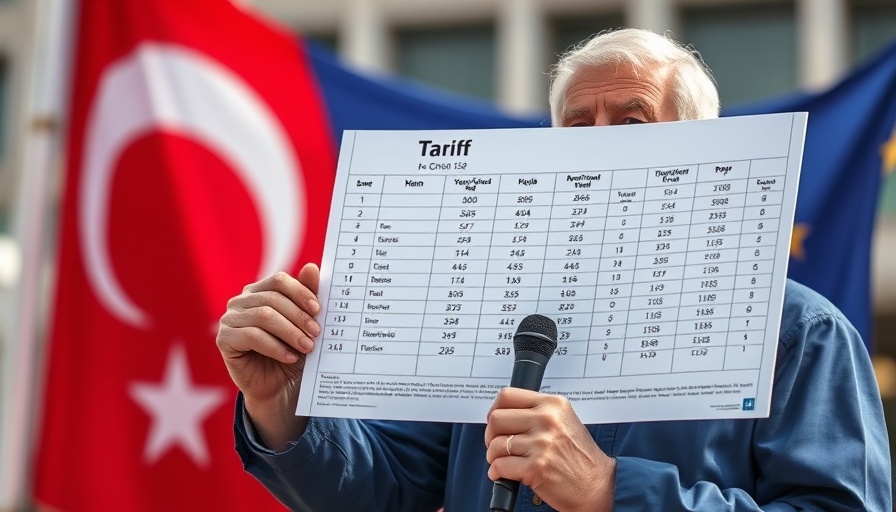
U.S.-China Trade Pause: A Response to Market Volatility
As markets grapple with uncertainty fueled by ongoing geopolitical tensions, a significant development emerged: the United States and China have agreed to pause reciprocal tariffs for 90 days. This temporary truce marks a turning point in a long-standing trade dispute that has heavily impacted the technology sector, and investors are responding positively.
What's at Stake for Tech Stocks?
In specific terms, the agreement sees the U.S. lowering its 145% tariff on Chinese goods to 30%, while China reciprocates by significantly reducing its 125% tariff on U.S. imports to just 10%. The announcement sent U.S. tech stock futures surging, with major players like Apple, Amazon, Tesla, Nvidia, and Meta seeing pre-market gains of around 5% to 6%. This is a crucial development for companies that rely heavily on supply chains in China, where costs have skyrocketed due to previous tariffs.
Broader Market Implications
Tech stocks are not alone in this rally. The Nasdaq overall rose by approximately 3.8% amid this news. Companies leveraging Chinese resources for manufacturing are particularly set to benefit, indicating a potentially bullish market sentiment moving forward. Rapid manufacturing and innovation cycles in tech could be revitalized with a more favorable trade environment.
What About Consumers?
The implications of this trade agreement extend beyond just stock prices. For everyday consumers, this could lead to stabilization in product prices, particularly electronics, which have seen inflation impacts due to tariffs. Reduced tariffs may result in more affordable technology and gadgets, positively influencing the domestic market.
A Closer Look at Related Issues
However, it is essential to note that this agreement does not address the recent U.S. decision to remove the "de minimis" exemption, which previously allowed imports valued below $800 to be exempt from duties. As seen in the past, such regulations can exacerbate trade tensions and lead to broader market ramifications. Analysts are concerned that without addressing these underlying issues, the pause may only serve as a temporary fix.
Future Predictions: Will We See a Trend?
The tech landscape is constantly evolving, and investors are keen to pinpoint trends that may arise from this new agreement. Analysts anticipate that if both nations can maintain a collaborative stance, we could witness a more stable flow of goods and innovations across borders. Such a scenario would not only benefit U.S. tech firms but also support the global economy at large.
The Dynamic Nature of International Trade
This trade agreement could have long-lasting effects beyond just the technology sector, impacting a diverse range of industries reliant on international trade. Companies that can navigate this complex web of tariffs and trade policies may emerge stronger, better equipped to adapt to fluctuating market conditions.
Embracing Uncertainty: Strategic Moves for Investors
For investors, the key will be to remain nimble. With the global economy continuously shifting, influenced by political decisions and market responses, the ability to pivot strategies swiftly will be invaluable. Individual stock performance may vary wildly based on geographic supply chains, leaving savvy investors looking for companies that can best weather these changes.
Conclusion: Staying Informed in Tech News
The tech industry stands at a crossroads, with this latest U.S.-China trade agreement offering a glimpse of hope amidst uncertainty. Leaders in technology must stay informed about ongoing developments, as these changes can significantly affect market dynamics. Understanding both the implications of these tariffs and strategic responses will help tech enthusiasts and investors identify opportunities for growth within this volatile landscape.
 Add Row
Add Row  Add
Add 



Write A Comment